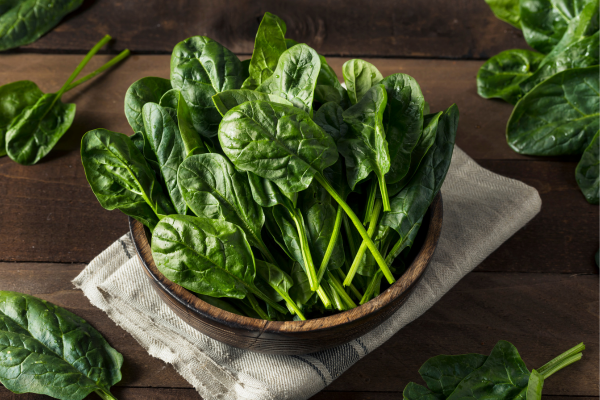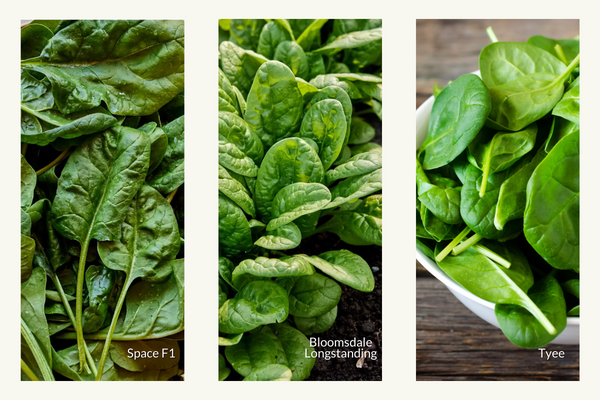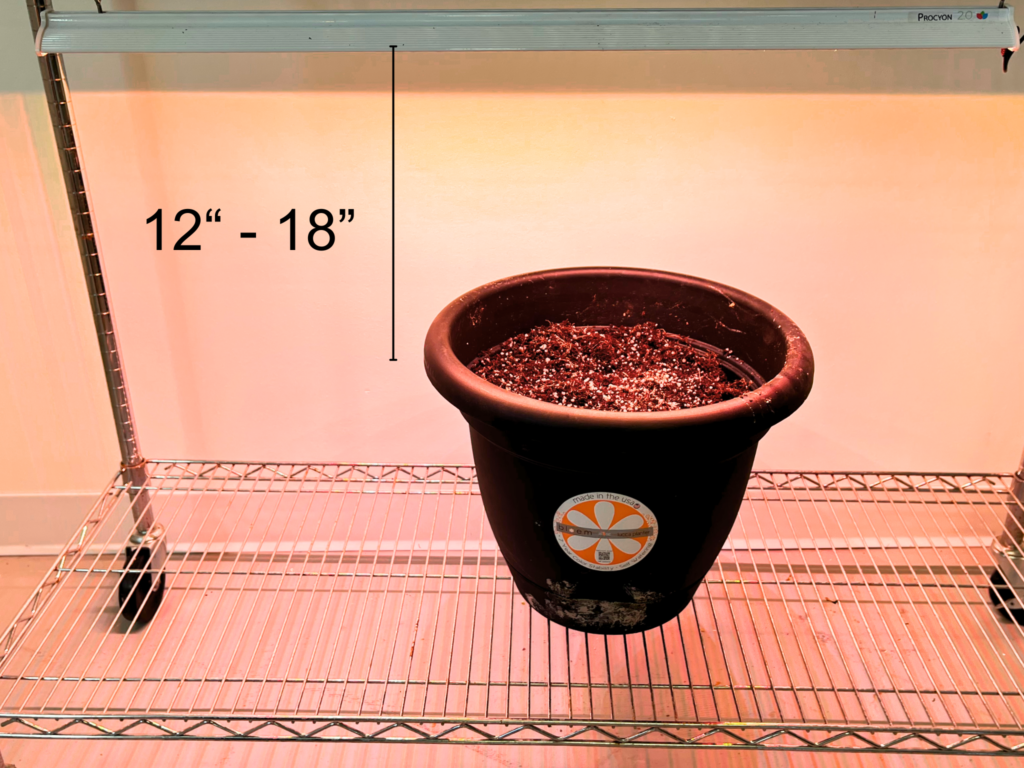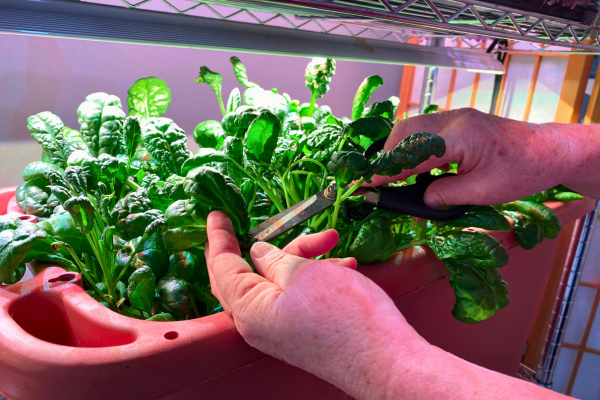Growing Spinach Indoors: A Beginners Guide
All ArticlesGrowing spinach outdoors is often limited by the seasons, with the plants thriving in cool weather but struggling in the heat of summer or the chill of winter. However, by growing spinach in your indoor garden, you can enjoy fresh, homegrown spinach year-round, free from the challenges of pests, bolting, and weather extremes. In this guide, we’ll go over the benefits, methods and materials needed . You’ll also receive a step-by-step guide that will give you the confidence to grow a thriving crop of spinach in your home, no matter the season.

Growing spinach indoors offers a wealth of benefits:
- Year-round availability: Harvest fresh spinach regardless of the season, enjoying its vibrant flavor and nutritional value.
- Control over growing conditions: Optimize light, temperature, and nutrients for healthy, thriving spinach plants.
- Reduced exposure to pests and diseases: Protect your spinach from outdoor threats and enjoy a cleaner, healthier harvest.
- Convenience and space-efficiency: Grow indoors regardless of limited outdoor space, enjoying the satisfaction of homegrown spinach right at your fingertips.
- Optimized for flavor and texture: Contrary to some expectations, food grown indoors can actually have a very appealing texture and flavor.
This guide specifically focuses on the use of Happy Leaf LED lights, renowned for their effectiveness in promoting healthy plant growth. Keep in mind that all grow lights are not the same. Happy Leaf LED lights provide the perfect environment for your indoor spinach to flourish.
Preparing for Indoor Spinach Cultivation
Choosing the right container is crucial for successful indoor spinach cultivation. Consider the following:
- Size: Opt for a container that is at least 6 inches deep and 12 inches wide to accommodate root growth. Self-watering vegetable planter boxes are ideal.
- Drainage: Ensure the container has drainage holes to prevent waterlogging.
- Material: Choose a material like clay, plastic, or fabric that is porous and allows for air circulation.

Next, select a spinach variety that thrives indoors.
Popular choices include:
- Space: A compact variety with short, upright leaves.
- Bloomsdale Longstanding: A high-yielding variety with tender leaves.
- Tyee: A fast-growing variety with smooth, dark green leaves.
Gather your supplies:
- Medium: Choose a well-draining potting mix formulated for vegetables. Consider a 50/50 blend of coco coir and vermiculite.
- Container: Self-watering vegetable planter box. 30” x 14” x 12” (deep) is an excellent size.
- Nutrient: We recommend General Hydroponics MaxiGro 10-5-14.
- Happy Leaf LED grow lights: Select a grow light suitable for the size of your growing area. The 33” Procyon 2.0 is the perfect size for that vegetable planter box
- Seeds: Purchase certified organic spinach seeds.
- Timer: Automate the light cycle for consistent growth.
Setting Up the Growing Environment
Spinach prefers a cool environment with temperatures between 60 and 75°F. Typically our homes are within this range. Place your Happy Leaf LED lights approximately 12-18 inches above the container. Aim for 14-16 hours of light per day. We recommend using a programmable timer so you don’t have to worry about turning your light off and on.

Planting Spinach Seeds
1.Fill the container with potting mix medium, leaving 3” – 6” of space at the top.

2.Moisten the medium with nutrient water.

3. Fill the nutrient water reservoir if you’re using a self-watering container.

4. Sow seeds 1/2 inch deep, spacing them 2-3 inches apart.

5. Cover the seeds lightly with medium and gently water again.
The first time you water will be from the top, after that, use the self-watering “trough” located near the bottom of the container.
Caring for Spinach Plants
If you’re using a self-watering container, check water levels every couple of days. Water your spinach plants deeply when the top inch of soil feels dry. Avoid overwatering, as this can lead to root rot.
Monitor your spinach plants closely and adjust the light settings if needed. As the plants grow, raise the lights to maintain the optimal distance.
Managing Pests and Diseases
Though less susceptible indoors, spinach can be affected by pests and diseases. Common threats include aphids, fungus gnats and fungal diseases.
Organic methods like insecticidal soap and neem oil can be effective in controlling pests. Small sticky traps are effective at controlling flying pests like fungus gnats. Maintain good sanitation and avoid overwatering to prevent fungal diseases. Read more about organic pest control on Roots & Refuge.
Harvesting Spinach

Spinach is ready for harvest when the leaves are 4-6 inches long and tender. Harvest individual leaves or cut the entire plant at the base with scissors.
Regular harvesting encourages new growth, ensuring a continuous supply of fresh spinach. Store harvested spinach in the refrigerator for up to 5 days.
Now that you’ve grown your own fresh spinach, take a look at the best pesto recipe ever!
Conclusion
Growing spinach indoors with Happy Leaf LED lights is a rewarding and accessible way to enjoy fresh, delicious spinach all year round. This guide provides a solid foundation for successful cultivation, empowering you to nurture thriving spinach plants in the comfort of your own home.
Want to grow tomatoes, peppers, succulents or learn about starting seeds? Click the highlighted links or visit Happy Leaf LEDs YouTube channel for a bunch of fun videos!